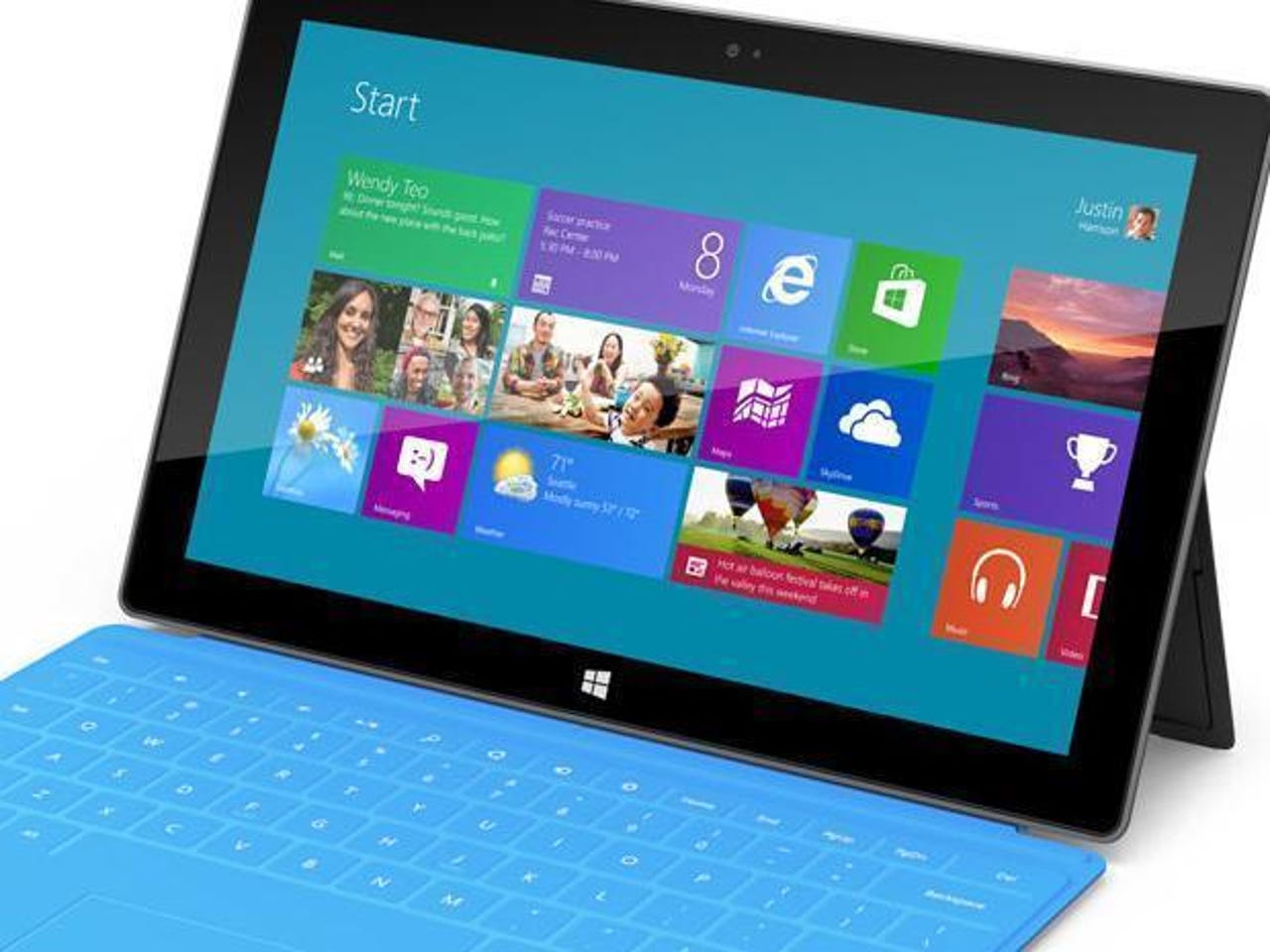Microsoft Surface, the keyboard, and the big question tablets can't escape

The way Microsoft's Surface tablet is being packaged is a little noticed detail — but it's a key one to the product's success.
It's offered in three packages — a 64GB Surface with Black Touch Cover (the combined keyboard and cover) for £559; 32GB with Black Touch Cover for £479; and a 32GB tablet without Touch Cover for £399.

While having two of the three options come with a keyboard is hardly a ringing endorsement of the touch-centric UI Microsoft is pushing, the keyboard's inclusion is likely to be vital to the broader success of Surface.
Here's why: to my mind, tablets are still content consumption devices, rather than content creation devices — which will limit their attractiveness to many users.
Adrian Kingsley-Hughes has a different take on this, and believes that the keyboard's presence is a mistake. While I understand his argument, I see the inclusion of the keyboard as symptomatic of the broader problem with tablets when it comes to productivity. The question they can't escape is this: can anyone actually work on a tablet without a keyboard?
Consumption vs creation
Fundamentally I'm not convinced that tablets are used for content creation. Most tablets are being used to consume, not create. And my sense is also that in business, right now, most tablets are being used by workers that don't actually create content.
Most tablets are being used to consume, not create
They're either being used by executives who are far too grand to ever type more than the odd note, or sales staff who just want to deliver presentations using a flashy new piece of hardware.
I don't know of many workers who will choose a tablet for data entry, or writing a report. You can, of course, type on a tablet screen if you have to — I could retype War and Peace on my iPhone if I really had to — but it's not a particularly satisfying experience.
However, Microsoft needs to tap the biggest possible market with Surface. It needs to appeal to the business as well as consumer markets — the content creators as well as the consumers — and position it as both a device that can replace a PC, as well as an additional piece of hardware to use alongside it.
A call to the sceptics
The keyboard can help Microsoft tackle both areas. With Surface RT, the inclusion of a keyboard means Microsoft can appeal to those who aren't sure they want a tablet, as well as those who do. The keyboard will let Microsoft push an angle of 'why buy a tablet and a laptop when Surface is both?' to consumers, a call to the late-adopting, tablet-sceptic mass market.
And when Surface Pro arrives, the keyboard will be at least as big (and probably a bigger) selling point for businesses. Enterprises have been wary of tablets because they are just an additional cost — nobody is going to give up their laptop as their primary computing device in favour of a tablet. But with a keyboard, the decision to ditch the notebook for a slate becomes a whole lot easier.
The problem is that tablets are such a new form factor in terms of popularity, that much remains unknown about how far the broader market (not the tech enthusiasts) will take to it, and how they'll use it. That's why we're seeing so much experimentation with sizes and add-ons like keyboards.
Having the Touch Cover makes the Surface a more attractive package for businesses and consumers alike.
There's just one problem, though — a tablet with a keyboard starts to look an awful lot like a laptop. Maybe that buying decision didn't just become so easy after all...